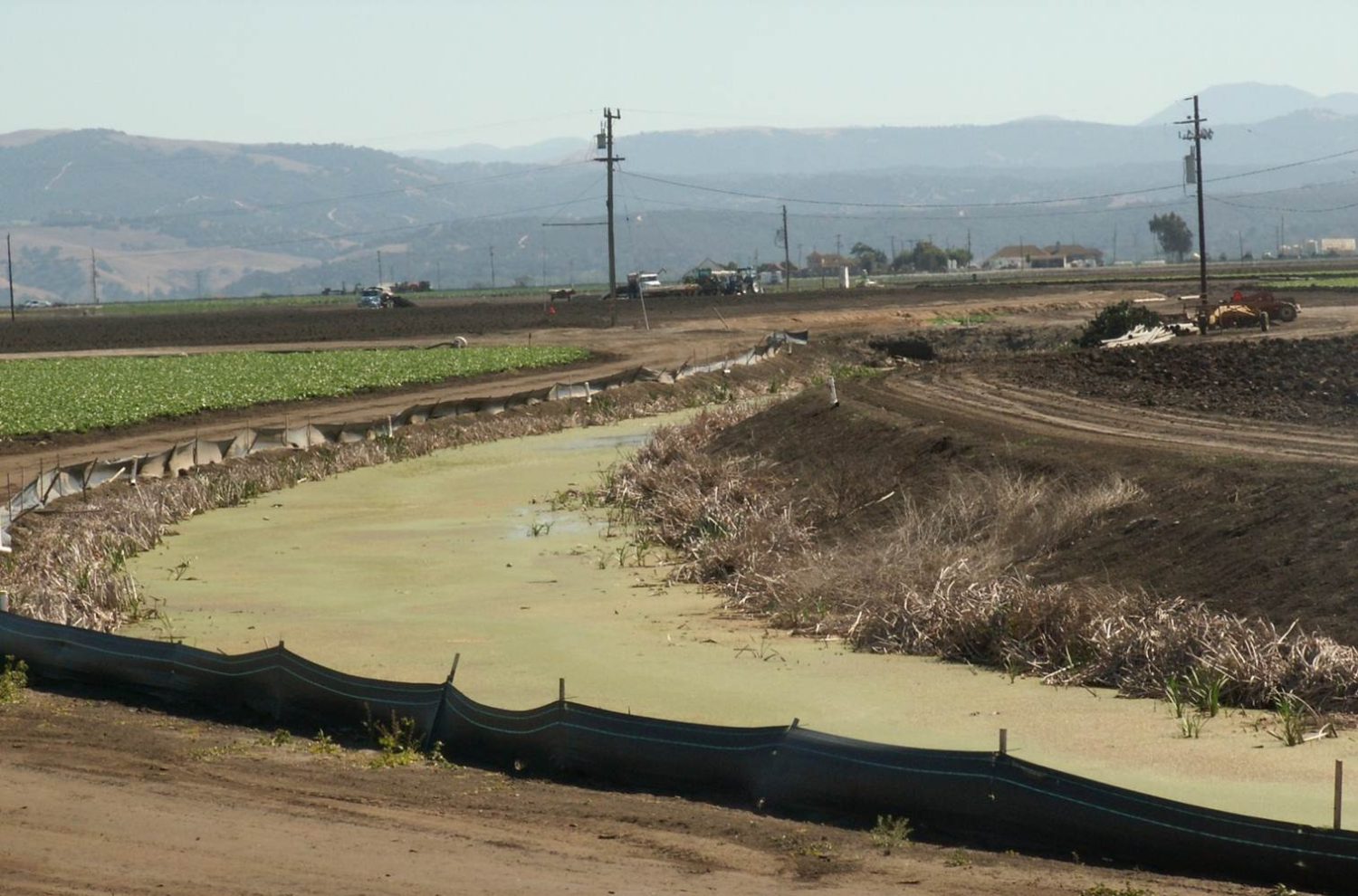
California leads the nation as a top agricultural producer and contributor to global food supply. Unfortunately, intensive agricultural activities threaten the very resources upon which they depend, including clean water and healthy soil.
Water discharges from agricultural operations in California pose significant threat to water quality by transporting pollutants – including toxic pesticides, sediment, nitrate, salts, pathogens, and heavy metals – from cultivated fields into surface and groundwater. Encroachment of streams and rivers throughout the state by intensive farming and grazing have also led to the destruction of natural riparian zones through increased erosion, nutrient and sediment pollution, higher water temperatures, and degraded aquatic habitats. Nutrient pollution and eutrophication are pressing challenges to water quality in California and agriculture is the largest source of nitrogen input into the environment in the state. The over- or improper application of fertilizers onto agricultural fields can cause excess nutrients to be lost to the environment through runoff, erosion, leaching, or volatilization, and impair beneficial uses of water throughout the state, including drinking water and recreation.
To address the impairment of California waterways from agricultural operations, California Coastkeeper Alliance has identified principles California must pursue to maintain healthy and clean water for all Californians to swim, fish, and drink.
- Individual farmers should be held accountable with enforceable standards, milestones, and timelines. Most existing permits regulating agricultural activities within California contain no enforceable standards to ensure growers are complying with state-wide water quality objectives.
- Robust surface water monitoring and reporting should be required in permits to demonstrate compliance with enforceable standards. Without monitoring to determine whether individual farmers are achieving water quality standards, it is impossible to hold growers accountable for their polluted runoff.
- Agriculture permits should require transparent reporting that do not delegate regulatory authority to farming coalitions. Regional Water Boards statewide risk the submission of inaccurate, incomplete, and misinterpreted water quality and water use data if they continue to rely on the regulated industry to self-enforce.
- Pesticide monitoring should use the best available science to detect water toxicity. Pesticide monitoring protocols have failed to keep pace with new pesticide technology and product use by focusing on pesticides that are no longer widely used in California.
- River setbacks should be required to enhance natural ecological and hydrological function. Intensive farming and grazing are encroaching on river and creek embankments causing higher nutrient and sediment pollution, higher water temperatures, lower water tables, poor water storage, and degraded aquatic environments.
- Livestock should be prevented from grazing in California waters and within river and creek embankments. Improper livestock grazing poses a serious threat to water quality, through the direct discharge of sewage waste and increases in erosion from poor soil health.
- Irrigated water should be applied reasonably to ensure rivers have water that flows. California needs to better implement existing laws to protect against overallocation of the state’s water supplies and preserve river flows.
- Cover crop should be required during non-harvest periods, and reducing till should be incentivized, to reduce erosion and improve soil health. Compaction of soils from overgrazing, the destruction of stream bank vegetation and riparian zones, and traditional tillage practices have all led to increased rates of bank instability and erosion, in turn increasing sediment runoff.
- Every human being has the right to safe, clean, affordable, and accessible water adequate for human consumption, cooking, and sanitary purposes. Studies indicate that fertilizer from farming is the largest source of nitrate pollution in drinking water in California, with farms causing 78 percent of the nitrate loading to groundwater.
- Industrial animal farms, such as dairies, should be sited away from surface waters and areas with high potential for groundwater infiltration. The proliferation of industrial animal farms and associated concentrated waste has the potential to contribute nutrients, suspended solids, pathogens, and heavy metals to surface and groundwater supplies.
For more information and to download CCKA’s Agricultural Principles, please visit https://tinyurl.com/ccka-ag-principles.

Executive Director Sean Bothwell leads CCKA’s initiatives to fight for swimmable, fishable, and drinkable waters for all Californians.



